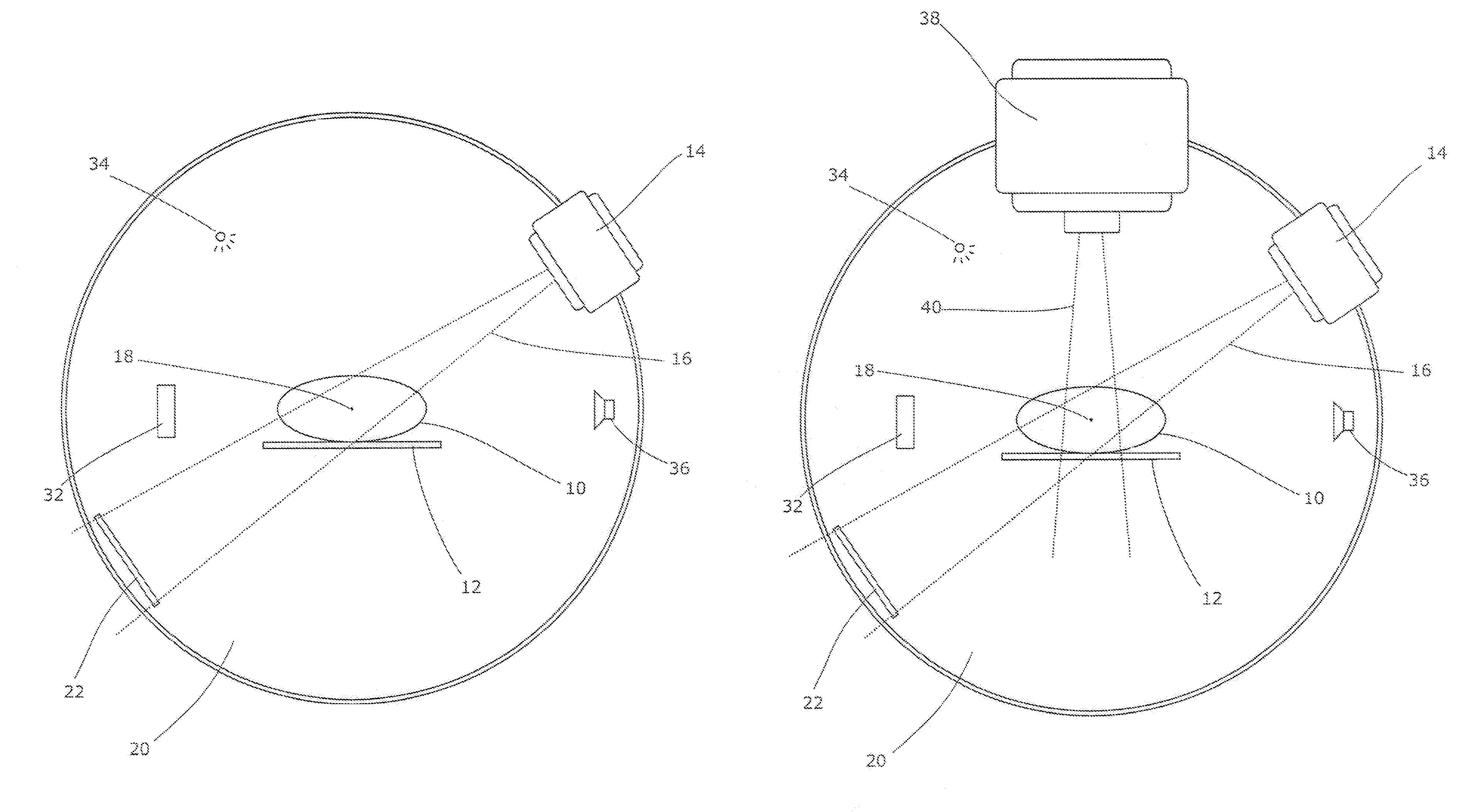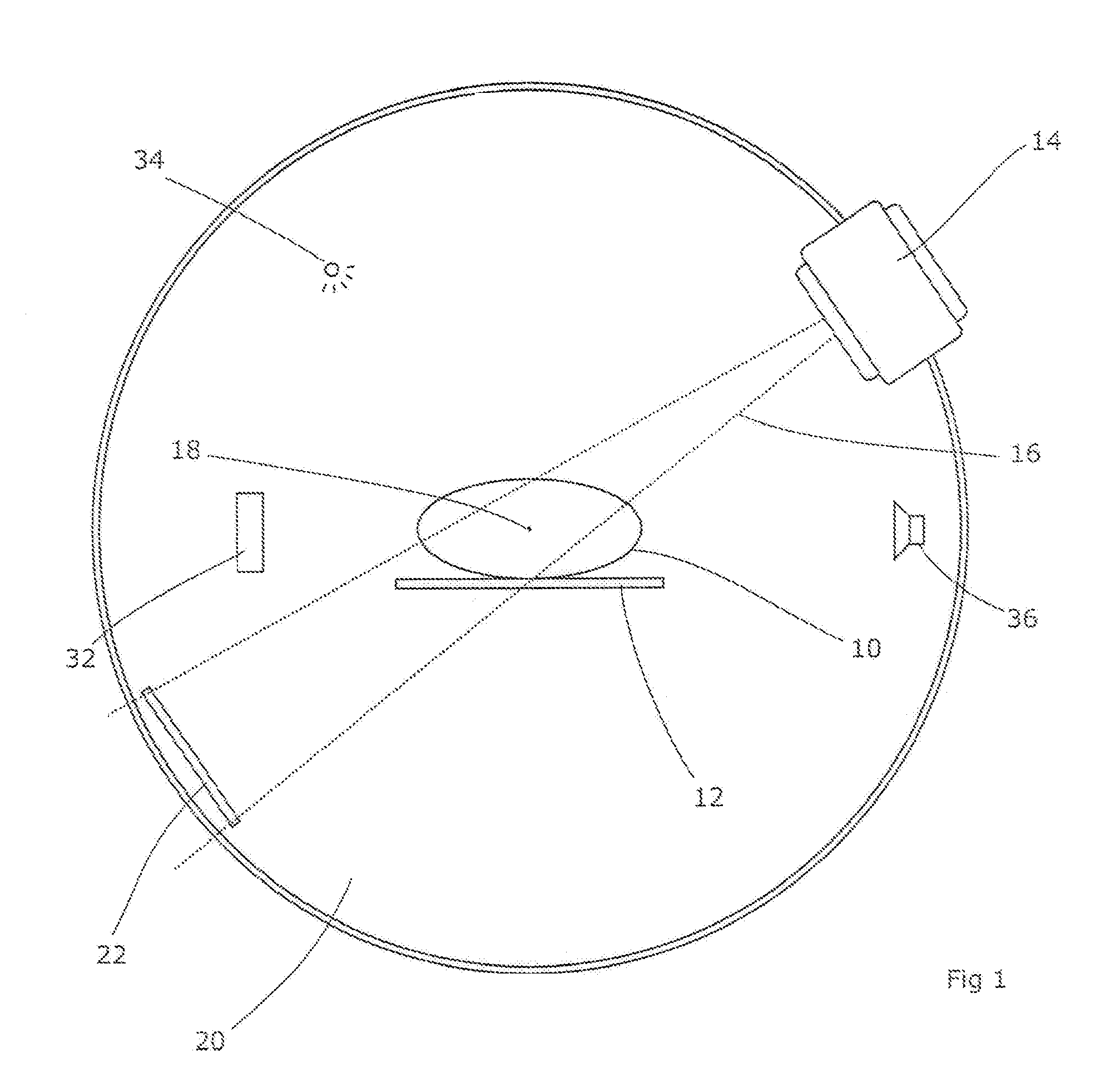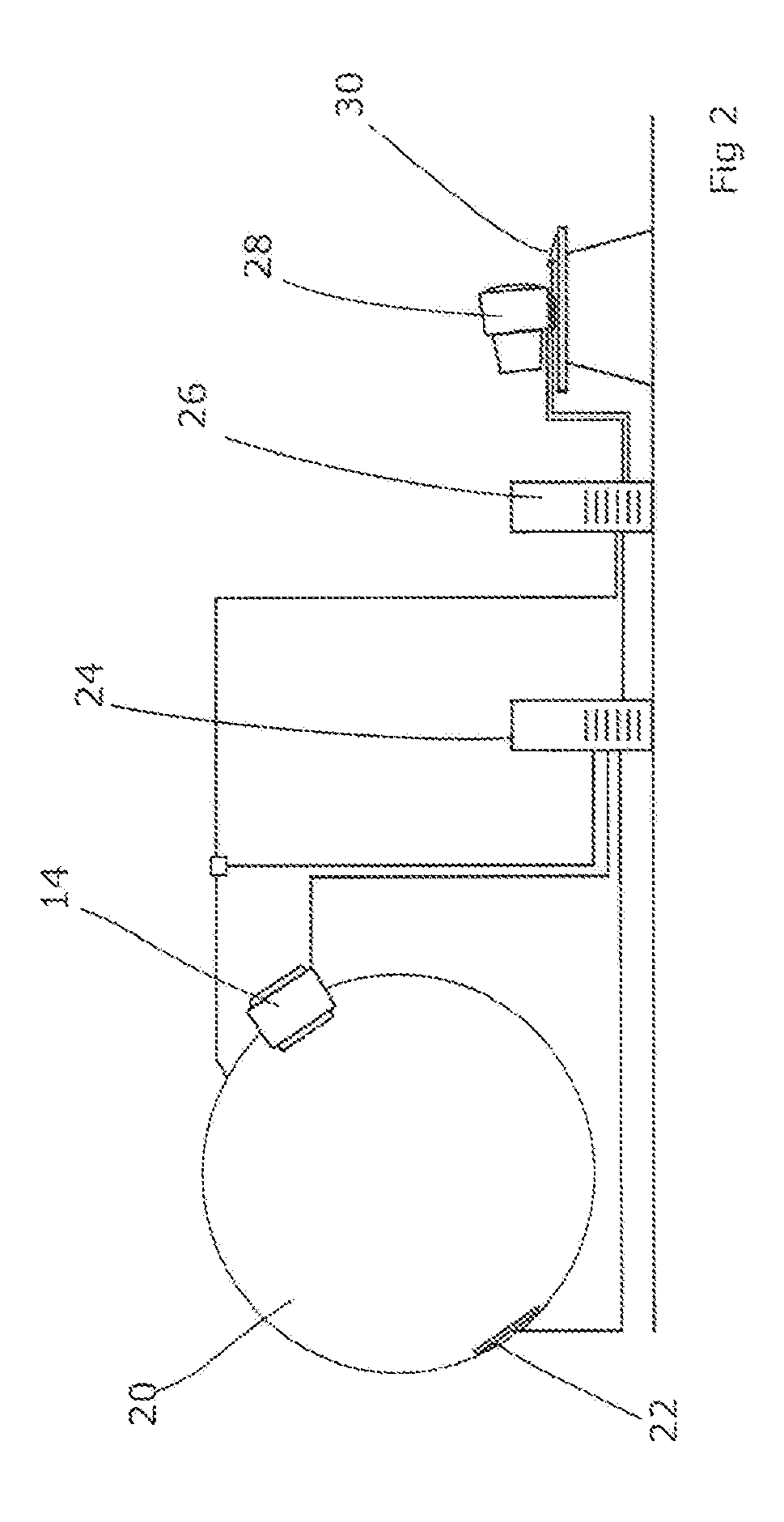Computed tomography scanning
a computed tomography and computed tomography technology, applied in image data processing, diagnostics, radiation therapy, etc., can solve the problems of not being able to select slices from the resulting data, the technique used in conventional ct scanners cannot be used directly, and the motion cannot be measured in the reconstruction volume data, so as to remove significant uncertainties and normal amplitude and pattern of breathing
- Summary
- Abstract
- Description
- Claims
- Application Information
AI Technical Summary
Benefits of technology
Problems solved by technology
Method used
Image
Examples
Embodiment Construction
[0016]FIG. 1 shows a cone beam CT scanner. A patient 10 is supported on a couch 12 which may be of any suitable design. Couches typically allow the elevation and longitudinal position of the patient to be adjusted and this may be provided for as desired. An x-ray source 14 is arranged to project a wide beam 16 of radiation generally directed towards the isocentre 18 of the patient. The source 14 is rotatable around the isocentre 18 on a rotational support 20. The support can, for example, be in the form of a ring or annulus around the patient 10 and couch 12 in which the source is mounted, or it can be a C-arm, or any suitable support allowing the source to rotate, or any combination thereof. A two-dimensional flat-panel detector 22 is also mounted on the support 20, opposite the source 14 and arranged to rotate in synchronism therewith. If the support includes a C-arm then this can be achieved by mounting the detector on the opposite arm.
[0017]Thus, radiation emitted by the source ...
PUM
 Login to View More
Login to View More Abstract
Description
Claims
Application Information
 Login to View More
Login to View More - R&D
- Intellectual Property
- Life Sciences
- Materials
- Tech Scout
- Unparalleled Data Quality
- Higher Quality Content
- 60% Fewer Hallucinations
Browse by: Latest US Patents, China's latest patents, Technical Efficacy Thesaurus, Application Domain, Technology Topic, Popular Technical Reports.
© 2025 PatSnap. All rights reserved.Legal|Privacy policy|Modern Slavery Act Transparency Statement|Sitemap|About US| Contact US: help@patsnap.com



